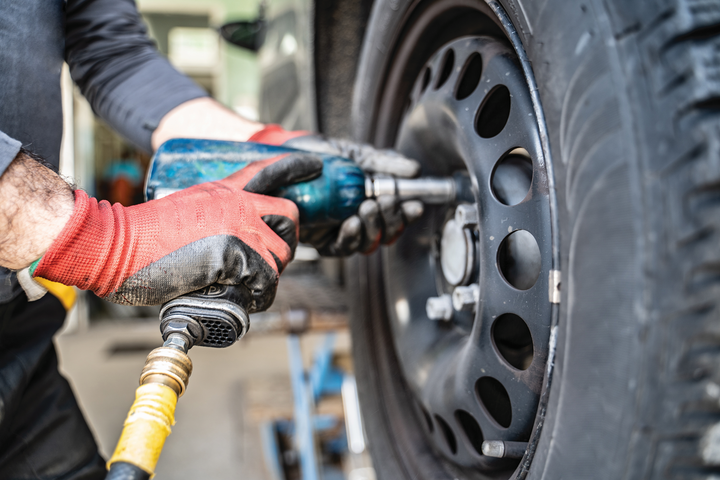Almost everyone has had the experience where they’ve been driving along the roadway and run over something that punctures a tire and leaves you with a flat. Although you might be able to replace the tire yourself right alongside the roadway, you’ll eventually need to evaluate what to do with the flat tire. Depending on where exactly is the puncture, as well as the severity of the puncture, you may salvage the tire, and don’t need to replace it.
The way to determine whether or not you can repair a tire is by assessing exactly where the damage took place. You can´t repair the tire if it has a puncture either on the shoulder or on the sidewall. It’s also true that you cannot repair a tire punctured by an object that is bigger than a quarter-inch in diameter. Other than these two main stipulations, most other situations can get effective repairs, so that you can salvage the tire rather than replace it.
You might think that you’re best off replacing it regardless of the circumstances. You’ll probably want to get some mileage out of it before discarding it if you have just purchased new tires. There are safe ways to make tire repairs so that you don’t have to worry about the roadworthiness of any tire. Continue reading below to find exactly how to make a safe tire repair.
How to Safely Repair a Tire
First of all, it will be necessary to remove the tire from its rim, and conduct a thorough inspection of the inside and outside of the tire. This is necessary because even though a tire might appear to require a simple fix, it’s entirely possible that the bottom half of a nail or some other object could have damaged the interior sidewall. If you have determined that the tire is indeed repairable, you will next need to trim the damaged area, so it can be clean and stable.
Then you’ll need to pull a rubber stem from the inside out right through the puncture area so that you can seal off the internal portion of the tire. Again from the inside, buff the puncture area and apply vulcanizing glue. Then it will be possible to install a patch on the inner liner which covers the entire puncture area, and which will trigger a chemical reaction.
After this has taken place, you can mount the tire back on the rim, inflate it to the manufacturer’s specified tire pressure, and then check thoroughly for any leaks. If done properly, this repair procedure should take somewhere between 60 and 90 minutes, and at the end of that time, you’ll have a solid, reliable tire for use on the roads.
Tires You can’t repair
There are some situations in which you can’t simply repair a damaged tire, usually because of the severity of the puncture or the location where it occurred. If your damaged tire falls into any of the categories listed below, you should consider it non-repairable and it will be safest to simply discard the tire and purchase a new one. In situations where a puncture has occurred outside the repairable area, it is not safe to attempt to carry out repairs on the tire.
Viable tire repairs are primarily restricted to the crown or middle area of the tire. The crown is the center of the tread, usually about an inch to an inch and a half inside each shoulder of the tire. In most tires, you can consider the repairable puncture area as the area between the first major grooves on each of the two shoulders. In terms of the size of any puncture, the maximum size which is safely repairable for any passenger vehicle or light truck will be 1/4 inch in diameter.
If the puncture is any larger than this, the only safe thing to do is to completely take it out of service and replace it with a new one. If you should discover that there is a clearly noticeable bubble in any of the sidewall areas of your tire that damage has probably occurred by direct impact with a pothole, curb, or some other obstacle in the road. When you see this kind of bubble or bulge in a sidewall, you should consider it unrepairable, and the tire must be taken out of service.
Don’t use tire plugs
If you’ve ever been advised to use a tire plug in order to carry out repairs on a damaged tire, you should resist the temptation to save money and avoid using the tire plug altogether. A tire plug is an expandable object you can push into a damaged area from the outside, which theoretically can stop the leakage of air from occurring. You can then adjust this tire plug until any leaking air stops altogether from the damaged area.
The danger of this is that even though the leaking might stop, the ‘repaired’ tire is probably not safe to drive on the open road. While tire plugs can be very tempting because they deliver a quick fix, they are also prone to failure over a period of time, especially when driving at high speeds or over long distances.
It’s also possible for them to cause air to get trapped in between tread layers, and this will eventually cause the tread itself to separate. Once this happens, you’ll need to purchase a new tire anyway. It’s simply not a good idea to drive a vehicle that has had a tire repaired by a tire plug because there will always be some uncertainty in your mind about how long it will last, or whether it’s safe to drive. When you’re considering the safety of yourself and your family members, you just don’t want to take a chance on tire plug repairs.


